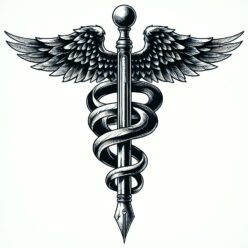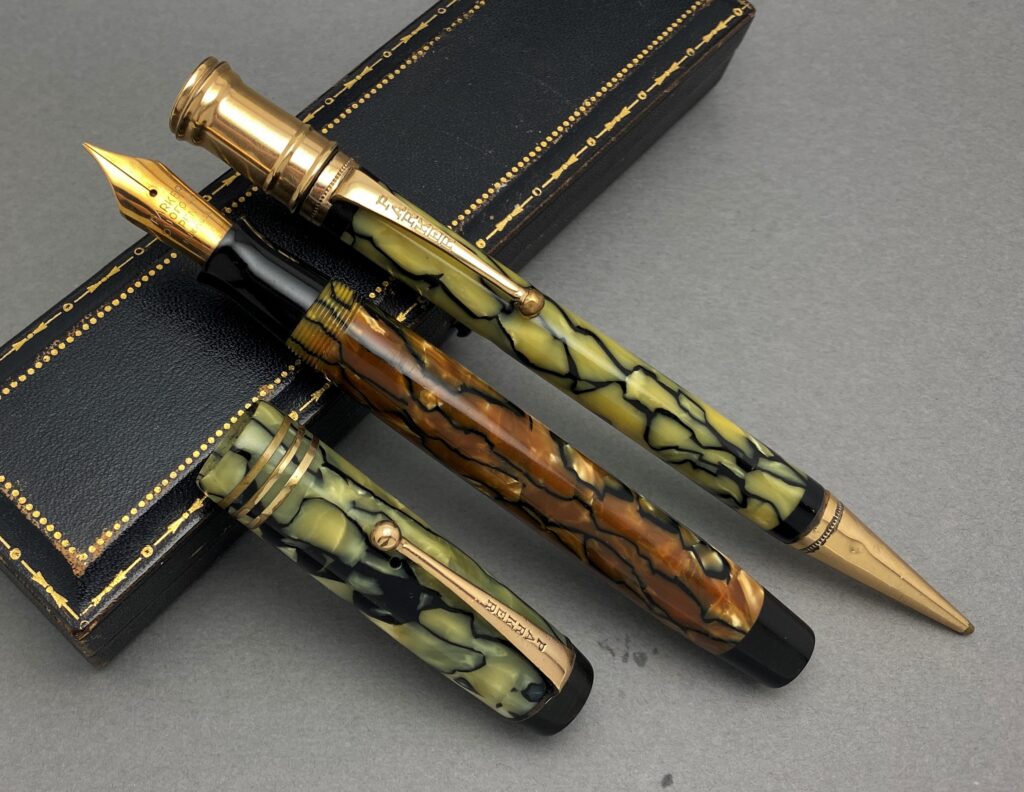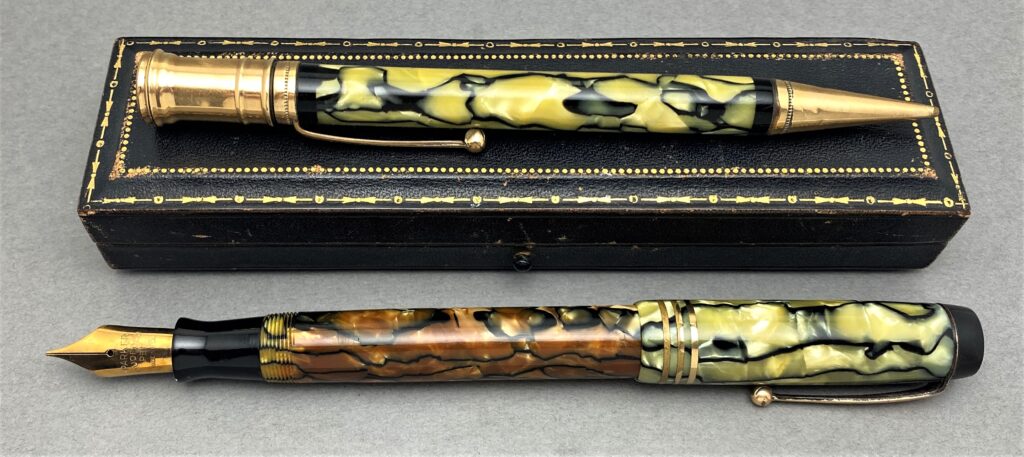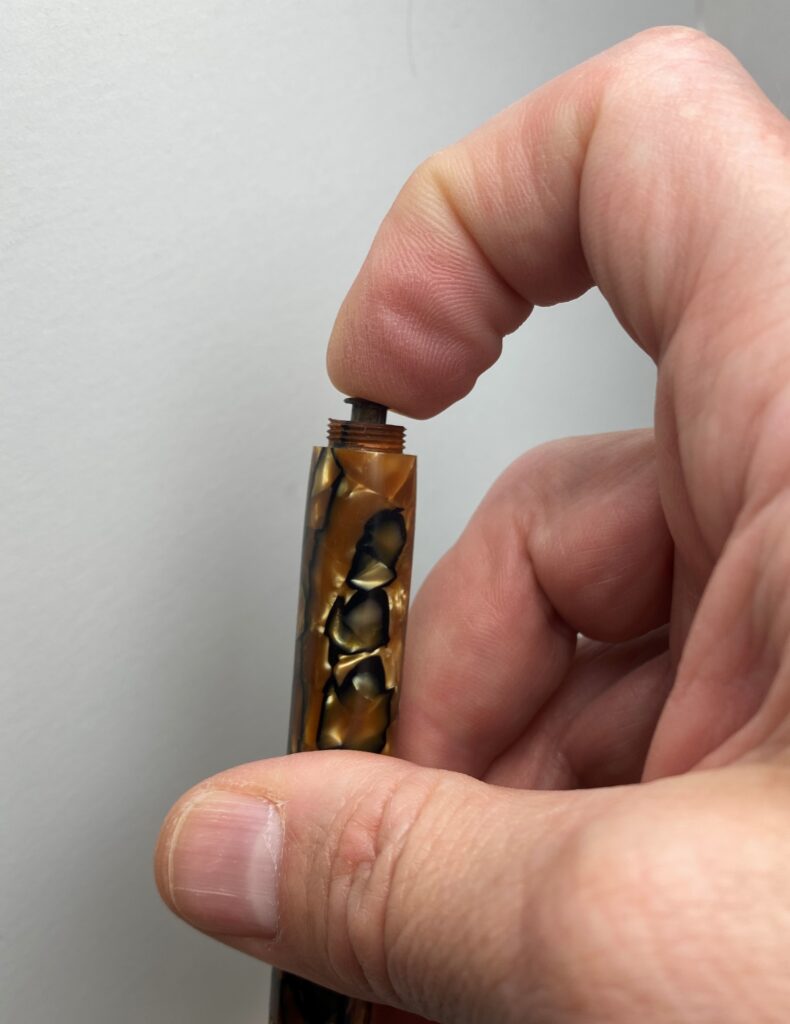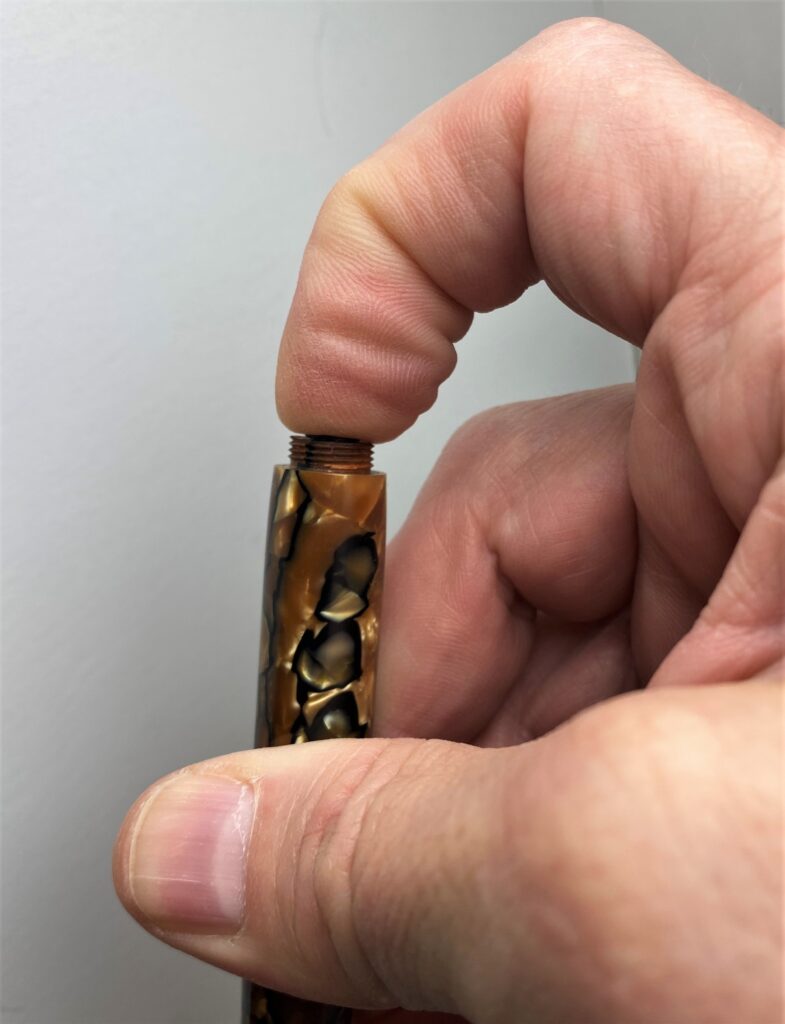I don’t know the exact date, but it was August 2011. That was when I got my first fountain pen. I had been buying a high end ballpoint pen every couple of years. Since I jotted notes all day at work, I enjoyed the heft and balance of a nice pen. My mother had noticed my small, growing collection of nice ball point pens, and one day told me that she had my grandfather’s fountain pen and pencil set that he bought for himself when he graduated from law school in 1930. He died before I was born, and I am named for him. And as a lover of vintage things, I knew that I would enjoy having that set with all of its family connection and history.
So one random visit in August 2011, she presented me with my grandfather’s fountain pen and pencil set. These were the coolest things I had ever seen. I had never used or so much as held a fountain pen before that. What do I do with this? Thankfully I was able to consult the internet. Parker. That was easy. It didn’t take long to find out it is a model called Duofold. Oh yeah! That is printed but partially worn out on the pen, and still legible on the pencil. Google led me to richardspens.com, where I not only saw all the colors, but learned about flat tops and streamline models.
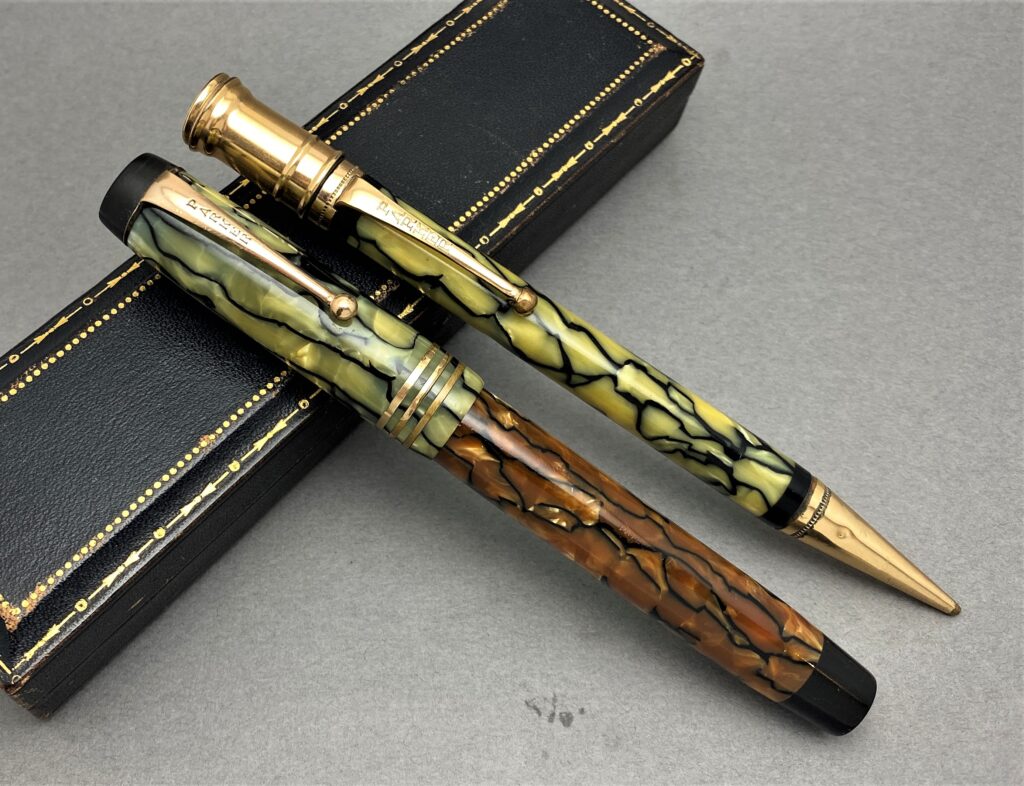
With a little research I learned that I could mail it off to be restored. It was pretty scary just mailing off a family heirloom to a total stranger with a web site. But it came back clean and ready to write. I had bought some basic ink at Office Depot, black Parker Quink. I removed the blind cap, dipped the nib into the ink, pressed the button and released. How strange to move a rigid piece of gold across paper, and yet it would glide smoothly and make a line. But then it rapidly ran out of ink after a line or two. I repeated a few times and it kept running out of ink. Something finally clued me in that you have to actually physically press hard on the button and feel it compress the sac and expel air. I had been barely pressing it! Feeling foolish, but now more educated, I had managed to properly fill the pen and it was ready to write.
As I enjoyed this family treasure, now beautiful and functioning after many decades in a drawer, I learned about Waterman, Sheaffer, and Wahl-Eversharp. How nice it would be to have one iconic pen from each of these top pen makers. Who would ever need more than four vintage pens! The rest of the story does not need to be laid out for pen collectors, or for collectors of anything at all really. Over time I learned how to change a sac, I added an ultrasonic cleaner to my tools, and as my taste in pens ran earlier and earlier, I even bought myself a lathe one year as a birthday present to myself. Through pen shows I have made friends, and through the internet, other friends who I have yet to meet in person. And sitting home at the start of the pandemic, I even made a vintage pen hobby website, more for myself, but hopefully for the benefit of collectors. I learned so much on line from the websites of other pen collectors, and I hope that a few collectors will benefit from my contribution.
This month marks 10 years in the hobby of vintage pen collecting, and rapidly after that, restoration. Lots of pens. Lots of tales of lucky finds, occasional bad buys, and great restoration projects. I am looking forward to what the next 10 years will bring.
[Interesting side note: My grandfather’s pencil is a flat top style Duofold pencil, and the pen is a streamline. There is no question that they have lived their entire post-sale life as a set. So not every “mismatch” is really a mismatch, depending how you define it. This experience has left me more interested than disappointed in early c1900 pens that have “incorrect” nibs that are clearly period correct, and likely been that way for over 100 years.]
There is no shame in silly errors when you are learning. So I will share my realization with others. On the left, THE BUTTON IS NOT PRESSED!!! The right side shows how it looks when the button if pressed.
